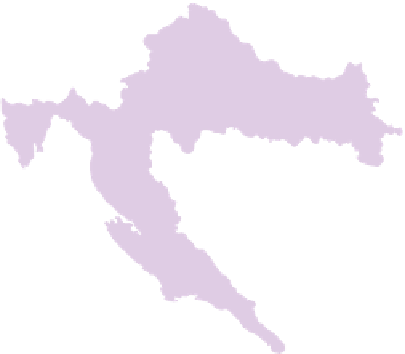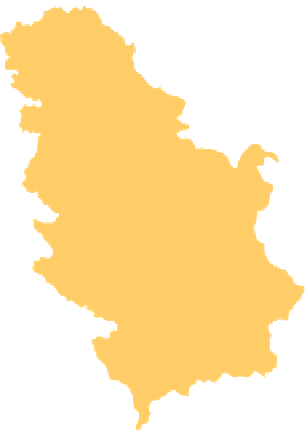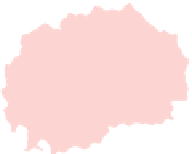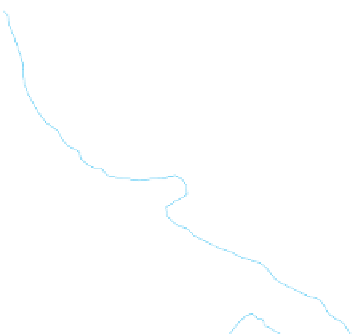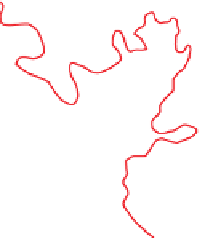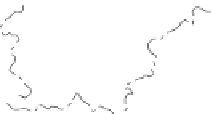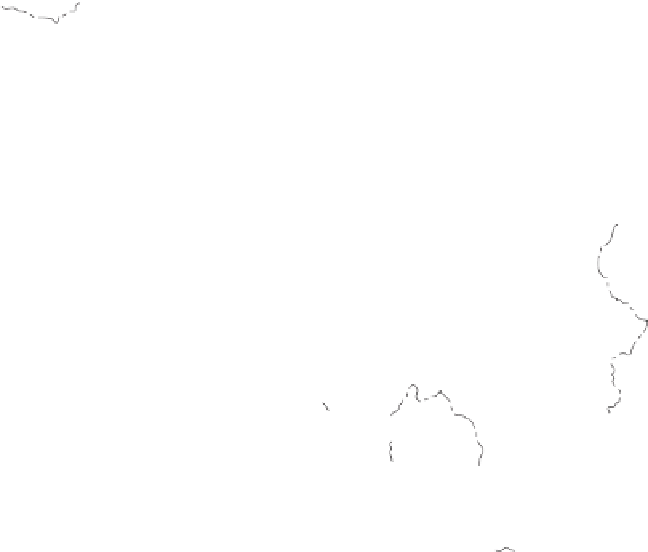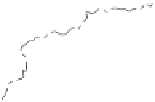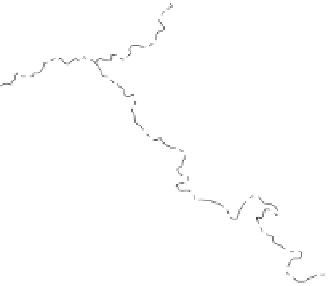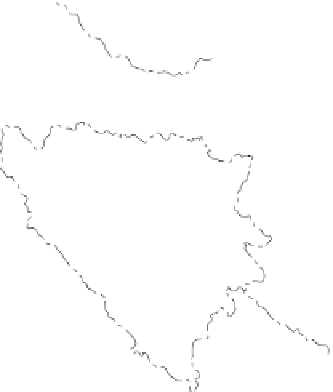Geography Reference
In-Depth Information
15
°
20
°
HUNGARY
L
j
ub
lj
ana
Subotica
SLOVENIA
Za
g
reb
ROMANIA
VOJVODINA
CROATIA
EASTERN
SLAVONIA
Rijeka
Novi Sad
Posavina Corridor
Serb "Republic"
Brcko
Be
lg
rade
Muslim
Domain
Banja Luka
Tuzla
Muslim
Domain
Serb
"Rep."
SERBIA
BOSNIA
Sara
j
evo
Pale
Croat
Domain
Serb communities
in Kosovo
Split
Kosovar - Albanian
communities
in Serbia
Mostar
MONTENEGRO
Mitrovica
Niksic
Pristina
Dubrovnik
ITALY
Pec
KOSOVO
Pod
g
orica
BULGARIA
Prizren
Muslim Kosovo
SERBIA AND ITS NEIGHBORS
Skopje
Dayton Accords Partition Line
Muslim Macedonia
MACEDONIA
Muslim-dominated areas
Serb-dominated areas
Tirane
Figure 7.38
Bosnia and Herzegovina.
The map shows
the Muslim-Croat Federation, the Serb
Republic, and the Dayton Accord partition
line.
Durres
National capitals are underlined
ALBANIA
0
0
50
100
150 Kilometers
GREECE
50
100 Miles
Longitude East of Greenwich
20
°
© H. J. de Blij, Power of Place.
Northern Ireland
A number of western European countries, as well as
Canada and the United States, have large Catholic com-
munities and large Protestant communities, and often
these are refl ected in the regional distribution of the pop-
ulation. In most places, the split between these two sects
of Christianity creates little if any rift today. The most
notable exception is Northern Ireland.
Today Northern Ireland and Great Britain
(which includes England, Scotland, and Wales) form
the United Kingdom of Great Britain and Northern
Ireland (the UK). This was not always the case. For
centuries, the island of Ireland was its own entity,
marked by a mixture of Celtic religious practices and
Roman Catholicism. As early as the 1200s, the English
began to infi ltrate the island of Ireland, taking control
of its agricultural economy. Colonization began in the
sixteenth century, and by 1700, Britain controlled the
entire island. During the 1800s, the Irish colony pro-
duced industrial wealth for Britain in the shipyards
of the north. Protestants from the island of Great
Britain (primarily Scotland) migrated to Ireland dur-
ing the 1700s to Northern Ireland to take advantage of
the political and economic power granted to them in
the colony. During the 1800s, migrants were drawn to
northeastern Ireland where industrial jobs and oppor-
tunities were greatest. During the colonial period, the
British treated the Irish Catholics harshly, taking away
their lands, depriving them of their legal right to own
property or participate in government, and regarding
them as second-class citizens.
In the late 1800s, the Irish began reinvigorating
their Celtic and Irish traditions; this strengthening of
their identity fortifi ed their resolve against the British. In
the early 1900s, the Irish rebelled against British colo-
nialism. The rebellion was successful throughout most of
the island, which was Catholic dominated, leading to the
creation of the Republic of Ireland. But in the 1922 settle-
ment ending the confl ict, Britain retained control of six
counties in the northeast, which had Protestant majori-
ties. These counties constituted Northern Ireland, which
became part of the United Kingdom. The substantial
Catholic minority in Northern Ireland, however, did not
want to be part of the United Kingdom (Fig. 7.39)—par-
ticularly since the Protestant majority, constituting about
two-thirds of the total population (about 1.6 million) of
Northern Ireland, possessed most of the economic and
political advantages.
As time went on, economic stagnation for both
populations worsened the situation, and the Catholics
in particular felt they were being repressed. Terrorist
acts by the Irish Republican Army (IRA), an organi-
zation dedicated to ending British control over all of
Ireland by violent means if necessary, brought British
troops into the area in 1968. Although the Republic of













